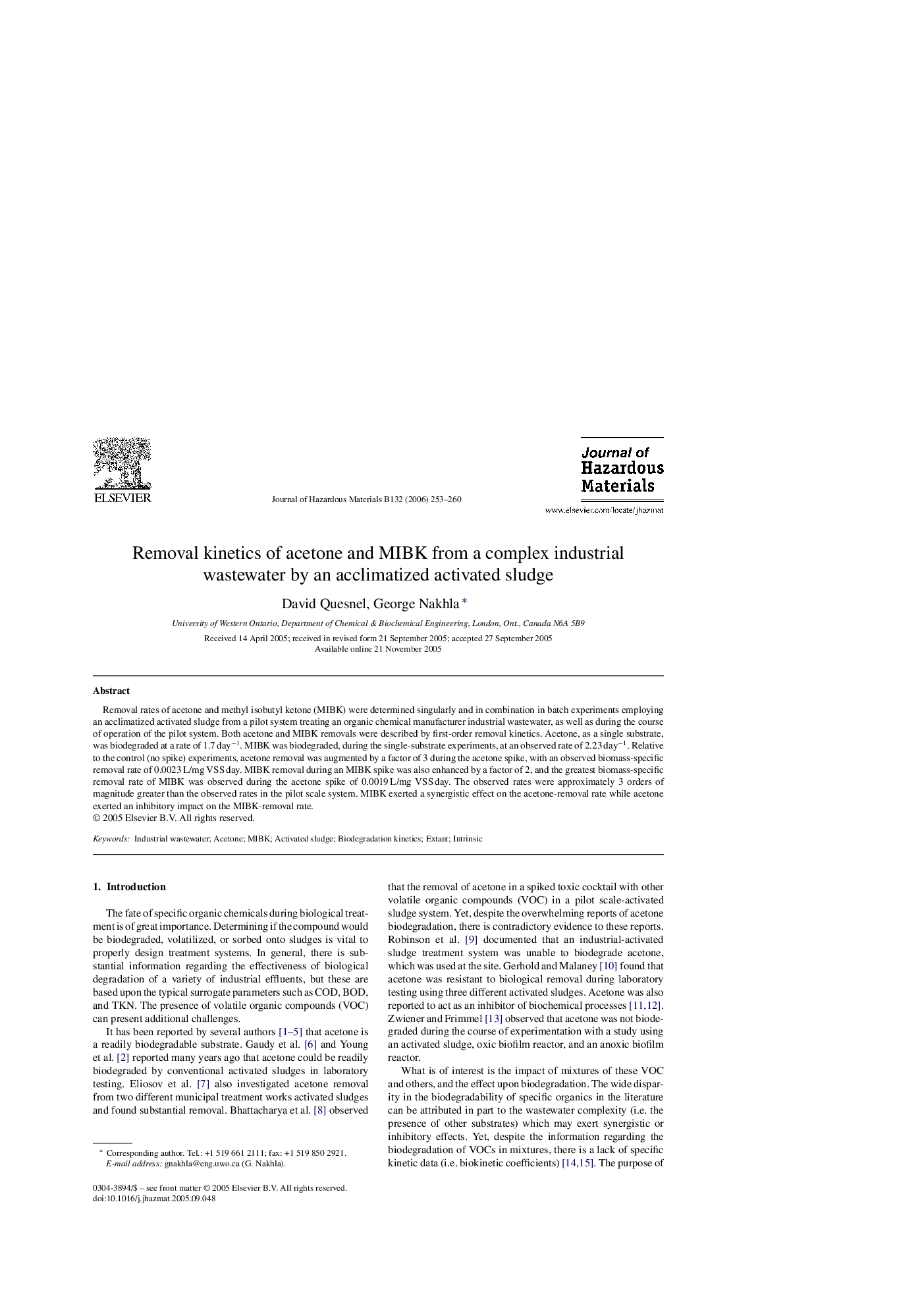| Article ID | Journal | Published Year | Pages | File Type |
|---|---|---|---|---|
| 585228 | Journal of Hazardous Materials | 2006 | 8 Pages |
Abstract
Removal rates of acetone and methyl isobutyl ketone (MIBK) were determined singularly and in combination in batch experiments employing an acclimatized activated sludge from a pilot system treating an organic chemical manufacturer industrial wastewater, as well as during the course of operation of the pilot system. Both acetone and MIBK removals were described by first-order removal kinetics. Acetone, as a single substrate, was biodegraded at a rate of 1.7Â dayâ1. MIBK was biodegraded, during the single-substrate experiments, at an observed rate of 2.23Â dayâ1. Relative to the control (no spike) experiments, acetone removal was augmented by a factor of 3 during the acetone spike, with an observed biomass-specific removal rate of 0.0023Â L/mg VSSÂ day. MIBK removal during an MIBK spike was also enhanced by a factor of 2, and the greatest biomass-specific removal rate of MIBK was observed during the acetone spike of 0.0019Â L/mg VSSÂ day. The observed rates were approximately 3 orders of magnitude greater than the observed rates in the pilot scale system. MIBK exerted a synergistic effect on the acetone-removal rate while acetone exerted an inhibitory impact on the MIBK-removal rate.
Related Topics
Physical Sciences and Engineering
Chemical Engineering
Chemical Health and Safety
Authors
David Quesnel, George Nakhla,
